d+Au Ridge: Cent- RxPeri, Different R Effect
This page is documentary purpose.
Motivation:
Cent-RxPeri is used for the first order correction of jet yield different in central and peripheral collision in d+Au ridge study. R value determines how the away-side distribution after jet correlation subtraction.
Here discusses how would the way of R obtained effect the conclusion.
Method:
In order to extract jet yield, fit dihadron correlation Δη projection with: Gaussin alone vs Gaussin + Pedestal.
Data set:
Run3
Primary tracks
|Vz| < 50 cm
nHitsFit > 25 points for TPC
nHitsFit > 5 points for FTPC
nHitsFit/nHitsPoss >= 51%
globa dca < 3 cm
|η|<1 for TPC
2.8<|eta|<3.8 for FTPC
1<pT<3 GeV/c
Results:
A. Gaussian + Pedestal
1. The near-side jet yields are found to be different in central and peripheral collisions.
In order to use the peripheral dihadron to take out the jet contribution on the away-side in central collisions, we scaled the peripheral dihadron (RxPeri) to have the same near-side jet yield.
R = YCent/YPeri
YCent is near-side jet yield in central collisions.
YPeri is near-side jet yield in peripheral collisions.
2. Y, the near-side jet yield in dihadron correlation is obtained by fitting the dihadron correlation Δη with Guassian+Pedestal (three parameters: Guassian area, width and pedestal constant). Here the Guassian presents the near-side jet correlation, pedestal for ridge.
So the Guassian area N would be the Y, the near-side jet yield.
| 0-20% | 40-100% |
 |
 |
R=0.0595/0.0460=1.29
3. For Δφ projection, do Cent - RxPeri to take out the away-side jet contribution in central collisions.
The assumption is the away-side jet yield is proportional to the near-side jet yield. Since RxPeri has the same near-side jet yield as Cent, they would have the same away-side jet yield now. Using Cent - RxPeri, what left will be the possible ridge.
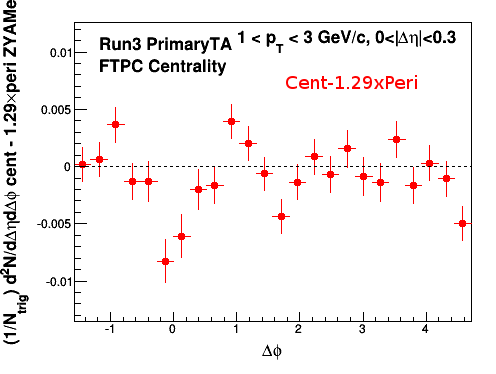 |
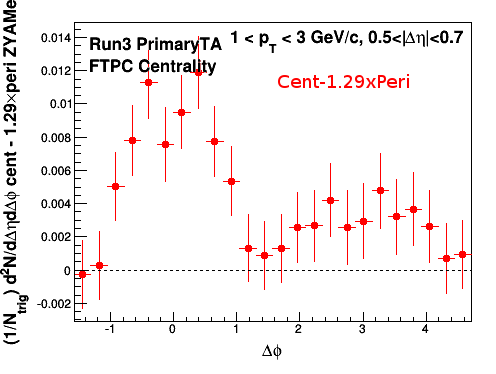 |
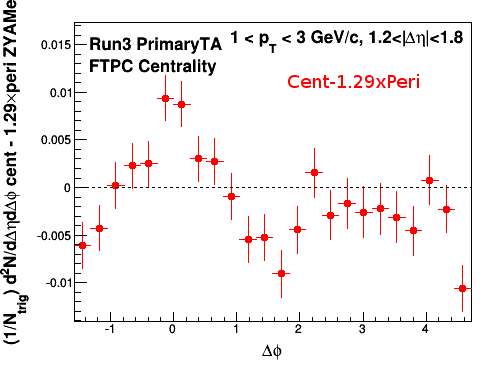 |
Note: The near-side Δφ distribution will be deformed, since central and peripheral near-side has different jet shape in Δη. But the away-side are more or less constant in Δη.
Cent-1.29xCent shows there is not away-side ridge.
B. Gaussian to Peripheral
Since one assumption is no ridge in peripheral collisions, it would be more appropriate to fit peripheral with Gaussian alone.
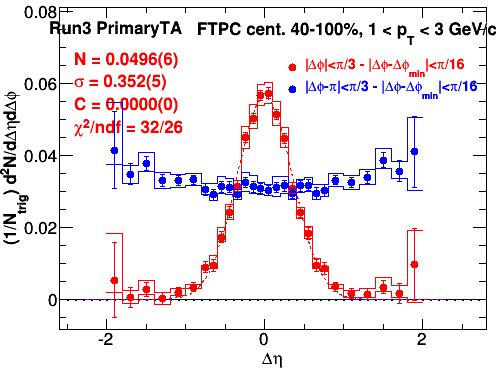
For central collision, we still have the previous Gaussian + Pedestal fit.
R = 0.0595/0.0496=1.2
Cent-1.2xPeri
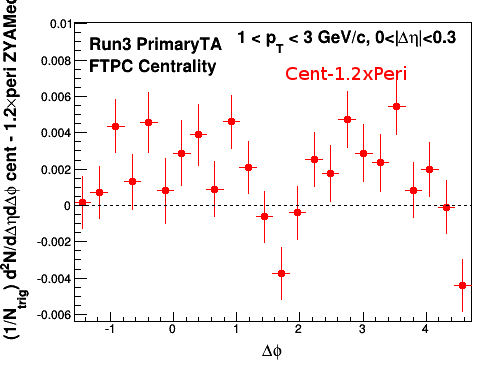 |
 |
 |
0.5<|Δη|<0.7 shows the double ridge, which also leaves hints in Cent-1.29xPeri.
For comparison Cent - Peri:
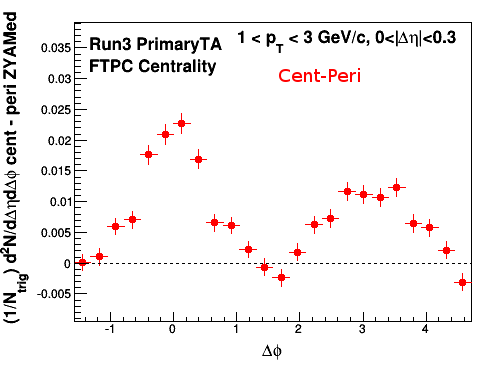 |
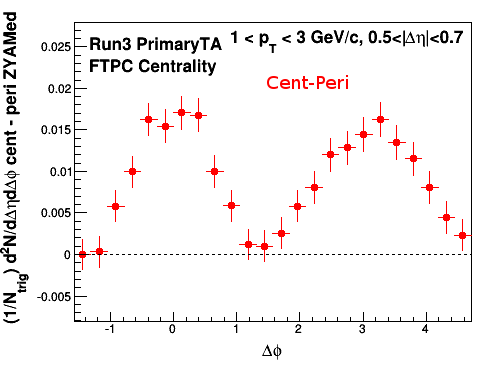 |
 |
- yili's blog
- Login or register to post comments
